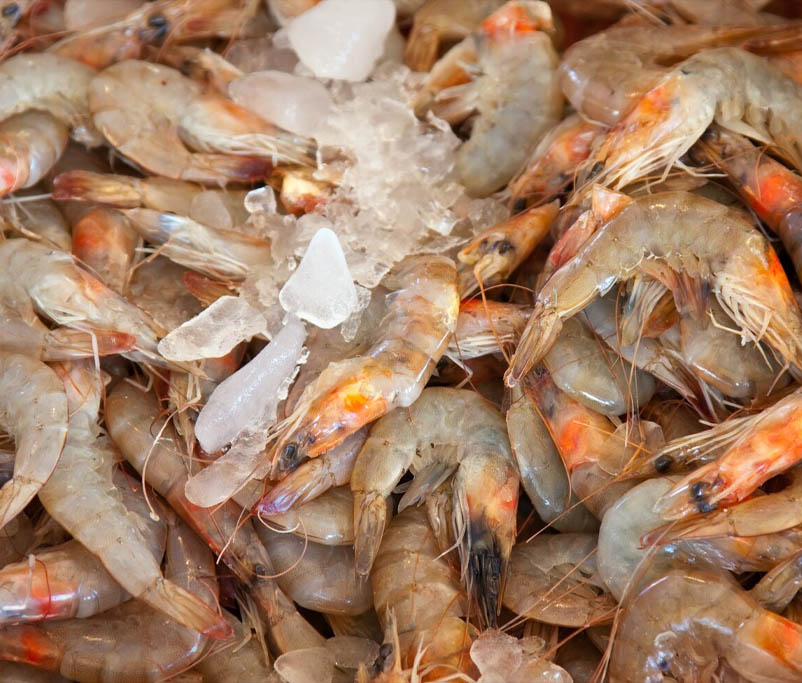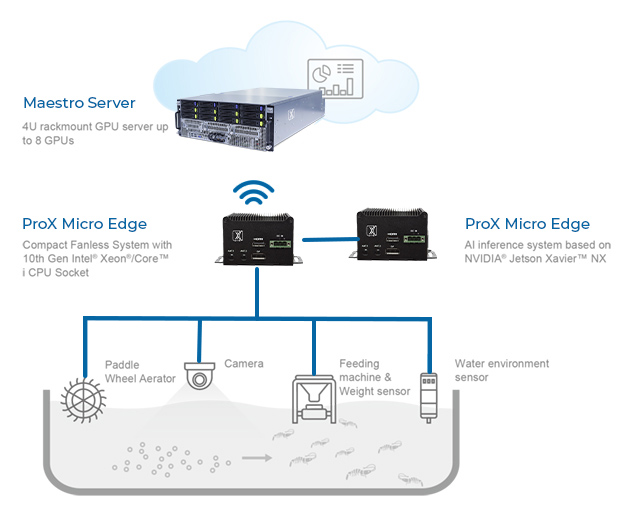For Professionals, By Professionals

Discover ProX PC for best custom-built PCs, powerful workstations, and GPU servers in India. Perfect for creators, professionals, and businesses. Shop now!
SERVICES
WE ACCEPT










Outline
AI Can Contributes to Sustainable Production Methods in Shrimp Farming
System Requirements
System Description
System Diagram
Project Implementation
Why ProX PC AI Solution
Related Products

AI Can Contributes to Sustainable Production Methods in Shrimp Farming
Shrimp farming has long been a lucrative industry, but it faces challenges related to inefficiencies and waste. However, artificial intelligence (AI) is emerging as a crucial driver of efficiency and sustainability in this industry. By utilizing AI for monitoring and management purposes, farmers can optimize feeding protocols and maintain the health of shrimp, thereby reducing waste, improving feed conversion ratios, and increasing shrimp production. In this way, AI can contribute to more sustainable production methods in shrimp farming, including minimizing feed waste and reducing environmental impact.
Shrimp farming has long been an important industry worldwide, but it faces significant challenges in terms of efficiency and sustainability. Poor feeding protocols and inadequate attention to environmental factors can have a detrimental effect on shrimp harvests. Mismanagement of operations can also lead to declines in shrimp health. Inefficient use of feed and poor water quality can cause highly turbid conditions, which require frequent water changes. However, AI technology offers significant promise in addressing these challenges and providing farmers with a powerful new tool to optimize their operations.
System Requirements
In order to harness the full potential of AI technology, shrimp farmers require access to real-time observations and data. The system must be capable of monitoring production environments, feeding, shrimp behavior, and other key factors. Additionally, the system must be able to connect observations with shrimp health so that farmers can optimize their operations accordingly. This approach can help shrimp farming operations reduce waste and minimize their environmental impact.
System Description
The system consists of a PC gateway that acquires data from a range of sensors such as cameras, weight sensors, and water quality sensors. This data is then utilized to control the paddle wheel aerator and feeding machine. The paddle wheel aerator regulates the water aeration, while the feeding machine controls the release of feed for the shrimp.
The ProX Micro Edge Device unit is embedded with a 10th Gen Intel® Core™ i CPU to support data acquisition and processing. It can connect to both wired and wireless networks to communicate with the Micro Edge Orin NX edge AI system and Maestro Server. The Micro Edge Orin NX AI system is powered by the NVIDIA Jetson Xavier NX SoM and is responsible for collecting sensor data from the Micro Edge Orin NX.. The feeding and shrimp growth AI models are processed on the Xavier NX CUDA cores. The metadata generated by the AI models is then sent back to the Micro Edge Orin NX via the Micro Edge Orin NX AI inference unit, which adjusts the paddle wheel aerator and feeding machine to maintain optimal conditions for the shrimp. The Maestro 8GPU server gathers data from various shrimp pools and uses it to retrain the AI system for more precise and efficient management.
System Diagram

Project Implementation
● ProX Micro Edge Orin NX AI inference system based on NVIDIA Jetson Xavier NX
● ProX PC Micro Edge Orin Nano Compact control system
● Maestro 8GPU server for the data dashboard
Why ProX PC AI Solution
Shrimp farmers can reap numerous benefits by using AI-powered monitoring and control in their operations. With real-time monitoring of shrimp populations, farmers can make informed decisions about feeding protocols, leading to improved feed conversion ratios and reduced waste. This, in turn, can lead to a reduced environmental impact of shrimp farming. Additionally, accumulated data can be stored and analyzed to gain insights into how shrimp populations are performing over time and how to improve long-term production resilience.
Shrimp farming faces significant challenges, including the handling of feed waste and its environmental impact. Fortunately, AI-powered monitoring and control systems can help farmers optimize feeding, reduce waste, and improve efficiency and sustainability. With this advanced technology, shrimp farming can become a sustainable and profitable industry. Additionally, AI-powered solutions can provide farmers with valuable data to improve their operations over time. In super-intensive farming conditions, AI can enhance the resilience and growth of shrimp production while also making the production environment more sustainable. With the combination of advanced technology and farming experience, the future of shrimp farming looks bright.
Related Products
Share this: